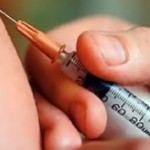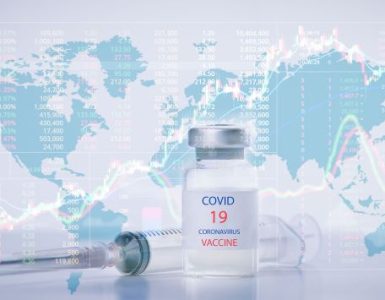
Hepatitis B vaccination protocols involving more frequent or higher doses may be more effective at producing virological response in HIV patients, researchers say.
Both a high-dose, four-shot regimen given intramuscularly and a lower dose given four times intradermally showed superior serological response compared with the standard three-dose schedule, according to Odile Launay, MD, PhD, of Hopital Cochin in Paris, and colleagues.
They reported their findings in the April 13 issue of the Journal of the American Medical Association.
Guidelines recommend that all HIV patients who are negative for hepatitis B get immunized. But for these patients, the immunogenicity of the shot is variable, and tends to be lower than in healthy adults.
So the researchers investigated whether two different protocols for delivering vaccine in this population could improve immunogenicity, via an open-label, multicenter, parallel-group, randomized trial conducted between June 28, 2007 and Oct. 23, 2008.
The study was done at 33 centers in France among patients enrolled in the French National Agency for Research on AIDS and Viral Hepatitis trials, in adults with HIV-1 infection who were free of hepatitis B and had CD4 cell counts of more than 200 cells/microliter.
Ultimately, 437 patients were randomized to one of three scenarios — three intramuscular shots of the standard dose (20 mcg), four double-dose intramuscular shots (40 mcg), or four low-dose intradermal shots (4 mcg).
The researchers found that by week 28, significantly more patients had responded to the four-dose regimens:
- 65% of those responded in the three-dose group
- 82% of those responded in the high-dose group (P<0.001);
- 77% of those responded in the low-dose group (P=0.02)
A high-level response was achieved in 41% of those on the standard protocol, compared with 74% of high-dose participants and 53% of low-dose.
At 28 weeks, mean antibody titers were 55 mIU/mL, 795 mIU/mL, and 104 mIU/mL, respectively.
They noted that for those on the high-dose regimen, significant increases in response rate were observed just one month after the last dose of the vaccine, and they also achieved a high seroconversion rate as soon as 12 weeks, compared with the standard protocol.
Thus, they said that “in real life,” even without completing a four-dose regimen, good levels of protection could still be achieved.
The researchers added that they saw no safety signals, although patients in the high-dose group had a higher rate of fever, nausea, or edema, and those in the low-dose group had a higher rate of local adverse reactions.
The study was limited because it did not evaluate protection against hepatitis B infection, nor did it assess long-term protection.
Still, Launay and colleagues concluded that the results are in agreement with recent pilot studies, and that the more frequent protocols for both the high-dose intramuscular shot and the low-dose intradermal shot “improved serological response in comparison with the standard schedule of the hepatitis B vaccine in HIV patients.”
Source: Medpage Today

















